Lugares de interés (POIs) del Mapa
0: Iranian Navy Overview
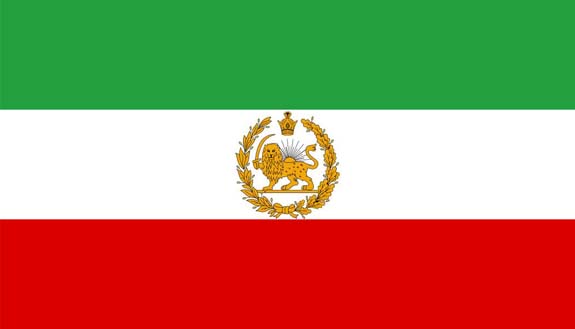
Personnel and organization:
The Islamic Republic of Iran Navy (also known as the Iranian Navy) has approximately 18,000 total Navy and 2,600 Marines. The Islamic Revolutionary Guard Corps Navy (also called the Pasdaran Revolutionary Guard Corps Navy) has about 20,000 personnel (including 5,000 Revolutionary Guard Marines) and is administered separately from the Iranian Navy. Beginning in 2007 the two naval forces were reorganized with the Iranian Navy given responsible primarily for longer range and extended duration operations in the Gulf of Oman, into the Indian Ocean and the Caspian Sea; the Pasdaran Revolutionary Guard Corps Navy has been assigned operational control inside the Persian Gulf waterway.
Bases: Fleet headquarters and principal dockyard at Bandar-e Abbas, with lesser facilities in the Persian Gulf at Kharg Island and Khorramshahr, on the Arabian Sea at Chah Bahar, and on the Caspian Coast at Bandar Anzali. By 2009, a new 4th Naval District headquarters was established at Asaluyeh on the Persian Gulf for use by the Revolutionary Guard Corps Navy, and the 2nd Naval District headquarters was relocated to Jask on the Gulf of Oman for use by the Iranian Navy.
Más sobre Iranian Navy Overview
1: Bandar-e Abbas
More information.
Más sobre Bandar-e Abbas
4: Bandar-e Anzali
More information
Más sobre Bandar-e Anzali
7: Jask
Más sobre Jask
8: Kharg Island
More information
Más sobre Kharg Island
13: Khorramshahr
Más sobre Khorramshahr
15: Iranian Subs
3 Russian kilo class (Project 877EKM)
Builder: United Admiralty Shipyard, St. Petersburg, Russia
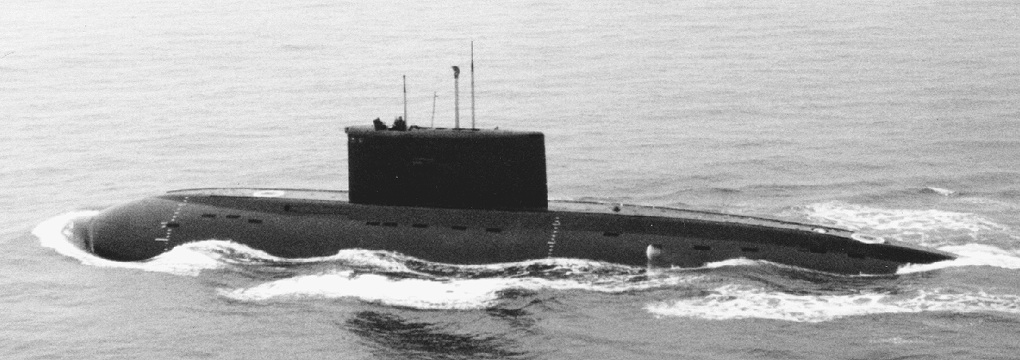
French Navy via Combat Fleets of the World 16th Edition
902 Nuh (ex-B-224)
903 Yunes (ex-B-219)
Displacement: 2,325 tons surf./3,076 tons sub.
Speed: 10 kts surf./17 kts sub.
Dimensions: 72.60 (70.0 wl) × 9.90 × 6.6 meters
Armament: 6 bow 533-mm TT (18 Type 53-77 wire-guided, E53-60 and E53-85 wake-homing, and E53-67 acoustic homing torpedoes, or 24 mines)—1 Fasta-4 SAM shoulder-launched syst. (8 Strela missiles)
Electronics: Radar: 1 MRK-50E Tobol (Snoop Tray-2) search Sonar: MGK-400 (Shark Gill) LF active/passive suite; passive hull array; MG-519 (Mouse Roar) HF active classification/mine avoidance; MG-519 active mine-avoidance; MG-553 sound velocity meter; MG-512 own-ship's cavitation detection EW: Brick Pulp or Squid Head intercept; 6701E (Quad Loop) D/F
Machinery: 2 Type 2D-42 diesel generator sets (1,825 bhp/1,500 kw each), electric drive: 1 motor; 1 6-bladed prop; 5,900 shp—1 130-shp low-speed motor—2 low-speed maneuvering motors; 2 ducted props; 204 shp
Range: 6,000/7 surf.; 400/3 sub.
Fuel: 172 tons
Endurance: 45 days crew: 12 officers, 41 enlisted
MIDGET SUBMARINES [SSM]
Note: Also under construction is at least one unit of the new domestically produced Qa’em-class of submarines, announced during 8-08. Expected to displace some 450- tons and to carry torpedoes, missiles, and/or special operations personnel, very little data has yet been released on the program.
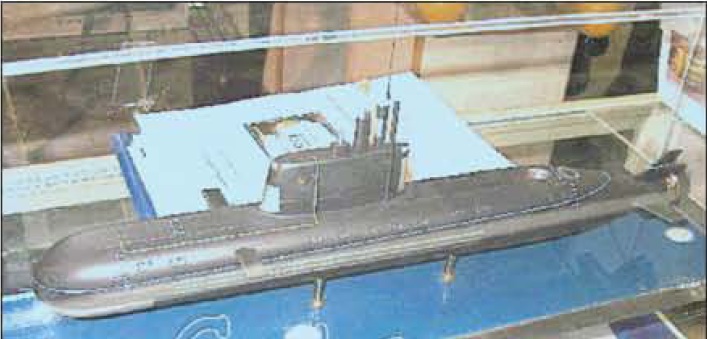
U.S. Navy via Combat Fleets of the World 16th Edition.
14 (+ . . . ) Ghadir (IS-120) class
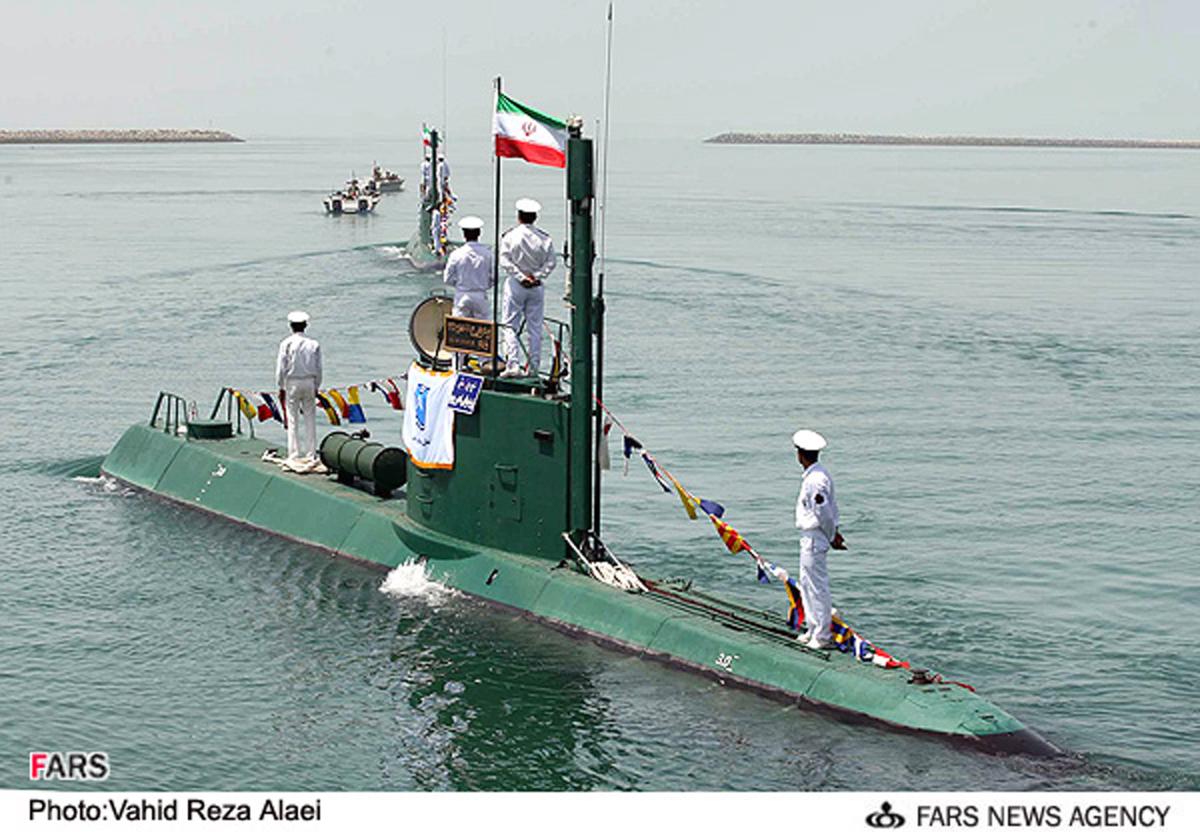
Fars News Agency via Combat Fleets of the World 16th Edition
Builder: Iran (Entered service: 2005)
Displacement: 115 tons surf./123 tons sub.
Dimensions: 29 × 2.75 × 2.5 meters
Machinery: Unknown diesel, electric drive
Speed: Unknown
Armament: 2 bow 533-mm TT (torpedoes and mines)
Range: Unknown
Crew: Unknown
Remarks: Also known as the Yano-class. May have been built with North Korean assistance. First unit lunched 11-04 with additional units following at a rate of two to four per year. Three submarines entered service on 11-11 and additional units are planned. Unconfirmed reports list the crew size as 18 and the speed as 11 knots. All are based at Bandar Abbas for use in the Persian Gulf and Strait of Hormuz.
1 Nahang class
Builder: Iran (Entered service: 2006)
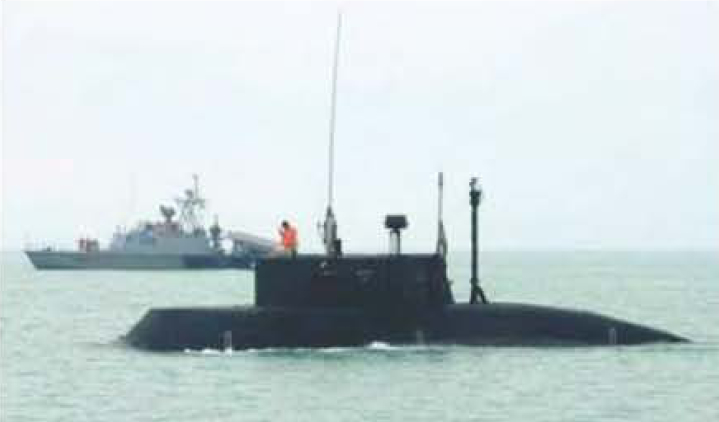
U.S. Navy via Combat Fleets of the World 16th Edition
Displacement: 100 tons surf./115 tons sub.
Dimensions: 25 × 3 × 2.5 meters
Armament: Unknown
Speed: Unknown
Machinery: Unknown
Range: Unknown
Crew: Unknown
Remarks: All data remains speculative. First observed during 4-06. Sonar and torpedo tubes do not appear to be fitted, and the submarine may be intended for the employ- ment and deployment of special operations forces and swimmer delivery vehicles.
Más sobre Iranian Subs
16: Iranian Surface Combatants
FRIGATES [FF]
3 Saam (vosper Mk 5) class
71 Alvand (ex-Saam) Builder: Vosper Thornycroft
72 Alborz (ex-Zaal) Builder: Vickers, Newcastle
73 Sabalan (ex-Rastam) Builder: Vickers, Barrow
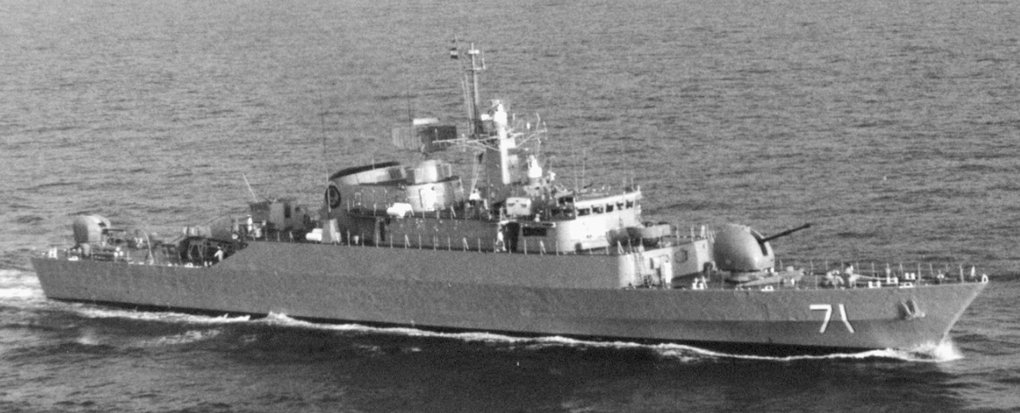
Mritunjoy Mazumdar for Combat Fleets of the World 16th Edition
Displacement: 1,250 tons
Speed: 39 kts (17.5 on diesels)
Dimensions: 94.5 (88.4 pp) × 11.07 × 3.25 meters
Armament: 4 C-802 SSM; 1 114-mm 55-cal. Vickers Mk 8 DP; 1 twin 35-mm 90-cal. Oerlikon AA; 2 single 20-mm 90-cal. Oerlikon GAM-B01 AA; 2 single 12.7-mm mg; 1 3-round Limbo Mk 10 ASW mortar (72ñ73 only); 2 triple 324-mm ASW TT (71 only)
Electronics: Radar: 1 Decca 1226 nav.; 1 Plessey AWS-1 air/surf. search; 2 Oerlikon-Con traves Sea Hunter 4 fire control; 1 Type 352C missile target-detection and tracking
Sonar: Graseby Type 174 hull-mounted search (7ñ9 kHz); Type 170 hull- mounted attack (15 kHz)
EW: Decca RDL-2AC intercept; FH-5 HFD/F
Machinery: CODOG: 2 Rolls-Royce Olympus TM-3A gas turbines; 2 Paxman 16-cyl. Ventura diesels for cruising; 2 CP props; 46,000 shp (turbines), 3,800 bhp (diesels)
Range: 5,000/15
Fuel: 150 tons (250 with overload)
Crew: 135 tot.
Remarks: Ordered 25-8-66. All renamed 1985. Sister Sahand (ex-Faramarz), hit by three Harpoon missiles and cluster bombs, was lost to U.S. forces 19-4-88. Sabalan, se- verely damaged the same date, was declared repaired by the Iranian Navy during 1989; although operational, the ship appears to have severe speed restrictions. All three were active during a 6-01 exercise.
1 (+1) Mowj-class
76 Jamaran Laid Down: 2007 Entered Service: 2010
Velayat Laid Down: 2011 Entered Service: 2013
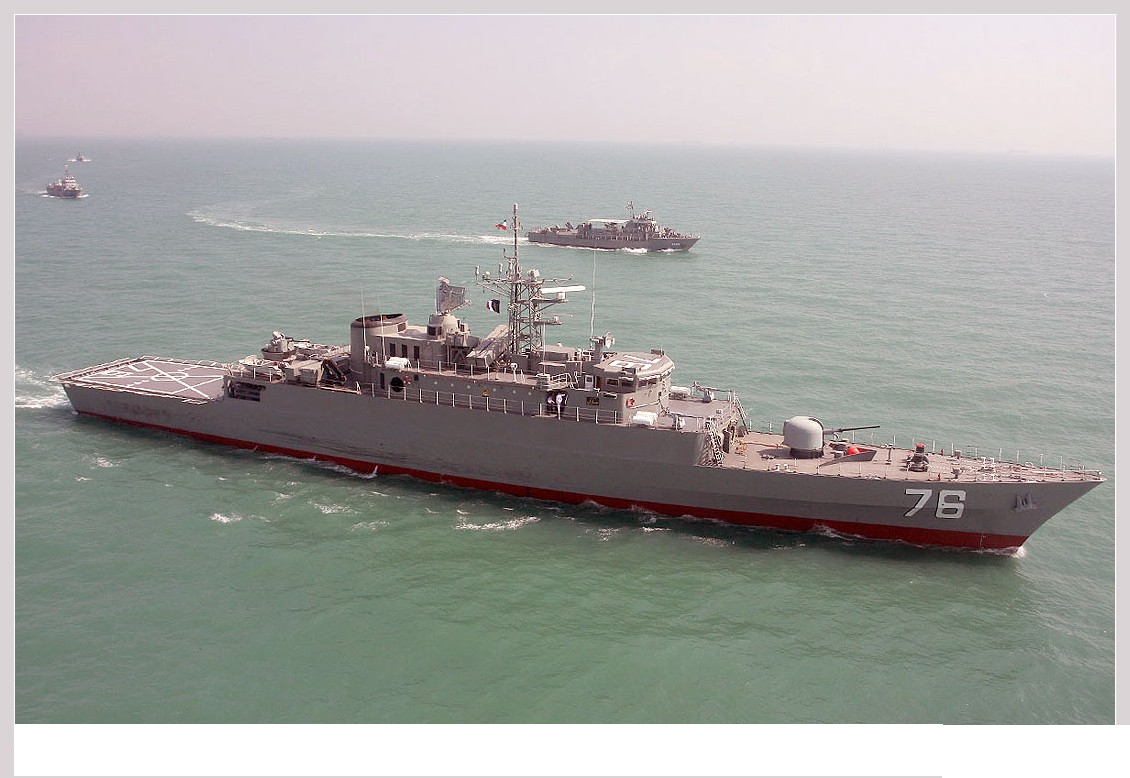 from Combat Fleets of the World 16th Edition
from Combat Fleets of the World 16th Edition
Displacement: 1,400 tons (standard)
Speed: 30 kts
Armament: 4 C-802 Noor SSM; 4 SM-1 Fajr SAMs; 1 76-mm Oto-Melara compact DP; 1 40-mm 70-cal. Bofors AA; 3 single 20-mm 90-cal. Oerlikon GAM-B01 AA; 2 triple 324-mm ASW TT?
Electronics: 1 Plessey AWS-1 air/surf. search radar; unknown f.c. radar
Machinery: 2 . . . diesels; 2 props
Range: Unknown
Crew: Unknown
Remarks: Modified version of the Saam (Vosper Mk 5) class. Additional units may be planned. Said to accommodate one helicopter and to be capable of antisubmarine, antiship, and antiaircraft missions. Armed with Iranian copies of the Chinese C-802 SSM (known as the Noor), and copies of the U.S. Standard SM-1 surface-to-air missile (called Fajr) are fitted abaft the stack in box launchers. Carry two small boats forward of the flight deck. Classified as a destroyer in Iranian service.
Information from the upcoming Combat Fleets of the World 16th Edition.
Más sobre Iranian Surface Combatants
17: Iranian Patrol Ships
2 U.S. PF 103 class Builder: Levingston SB, Orange, Texas
81 Bayandor (ex-PF 103) Entered Service: 18-5-64
82 Naghdi (ex-PF 104) Entered Service: 22-7-64
Displacement: 900 tons
Speed: 20 kts
Dimensions: 83.82 x 10.06 x 3.05 meters

Armament: Naghdi (82): 1. 76-mm DP gun; 2. 12.7-mm machine gun; 3. 20-mm Oerlikon GAM-BO1 AA gun; 4. SPS-6 air search radar; 5. Raytheon 1650 navigational radar; 6. Twin launchers for C-802/Noor SSM; 7. Twin 40-mm Bofors AA gun; 8. Triple 324-mm ASW TT Mk 1 Mod 2 AA; 2 single 20-mm 90-cal. Oerlikon GAM-B01 AA; 2 single 12.7-mm M2 mg; 2 triple 324-mm ASW TT; Drawing by Ivan Zajac for Combat Fleets of the World 16 Edition
Bayandor (81): 2 76.2-mm 50-cal. Mk. 34 DP; 1 twin 40-mm 60-cal. Bofors Mk 1 Mod 2 AA; 2 single 20-mm 90-cal. Oerlikon GAM-B01 AA; 2 single 12.7-mm M2 mg
Electronics: Radar: 1 Decca 1226 nav.; 1 Raytheon 1650 nav.; 1 SPS-6C air search. Sonar: SQS-17A hull-mounted HF search (probably removed)
Machinery: 2 Fairbanks-Morse 38D81?8 × 10 diesels; 2 props; 5,600 bhp?electric: 600 kw tot. (2 × 300 kw; 2 Fairbanks-Morse 38F51?4 × 6 diesels driving)
Range: 2,400/18; 3,000/15
Fuel: 110 tons
Crew: 133 tot.
Remarks: Built and transferred under the Military Aid Program. Sisters Milanian (83, ex-PF 105) and Kahnamuie (84, ex-PF 106) reported lost to Iraqi forces by 1982ñ83. 82 was refitted and re-engined during 1988. Bayandor collided with the U.S. guided- missile cruiser Gettysburg (CG 64) on 13-10-96 with little damage incurred.
Más sobre Iranian Patrol Ships
18: Missile Patrol Craft
13 Combattante-IIB/Sina 1* class
Builder: First 10 units: CMN, Cherbourg; P 224, P 225 and P 233: Bandar Addas, Iran
(P 221 - P 232 Entered Service: 1977 to 1981 P233 Entered Service: 2008).
Displacement: 249 tons (275 fl)
Speed: 36 kts
Dimensions: 47.0 × 7.1 × 1.9 meters
Armament: 4 C-802 SSM; 1 76-mm 62-cal. Oto Melara Compact DP; 1 40-mm 70-cal. Bofors AA (P 224, P 225, and P 233: 1 20-mm 90-cal. Oerlikon GAM-B01 AA in place of 40-mm AA); 2 12.7-mm mg
Electronics: Radar: 1 Decca 1226 nav.; 1 Thales WM-28 track-while-scan f.c.?EW: Thales TMV-433 suite (DR-2000 receiver, Alligator 5-A jammer, DALIA analyzer)
Machinery: 4 MTU 16V538 TB91 diesels; 4 props; 14,400 bhp ?
Electric: 350 kw
Range: 700/33.7
Fuel: 41 tons
Crew: 31 tot.
Remarks: First 10 units were contracted 19-2-74 and 14-10-74. P 230 and 232 were embargoed at Cherbourg 4-79 and released 22-6-81. P 232 was captured off Spain 13-8-80 by anti-Khomeini forces but abandoned later at Toulon. P 224, P 225 and P 233 are locally built variants, reportedly built for service in the Caspian Sea and sometimes referred to as the SINA 1-class. P 224, 225, 233, and 234 carry 1 20-mm 90-cal. Oer- likon GAM-B01 gun in place of the 40-mm gun, an update eventually planned for the entire class. P 224 and P 225 were named after original sisterPeykan (P 224) lost to Iraqi forces 11-80, and Joshan (P 225) sunk by U.S. forces on 19-4-88.
Combat systems: P 231 and P 232 had no Harpoon tubes on delivery, and all Har- poon missiles delivered by the U.S. are believed to have been expended. They were given a C-802 missile-launch capability during 1996ñ98. P 228 has conducted trials with a locally built version of the U.S. Standard SM-1 surface-to-air missile.
10 Chinese Houdong class
(Entered Service: 1995–96)
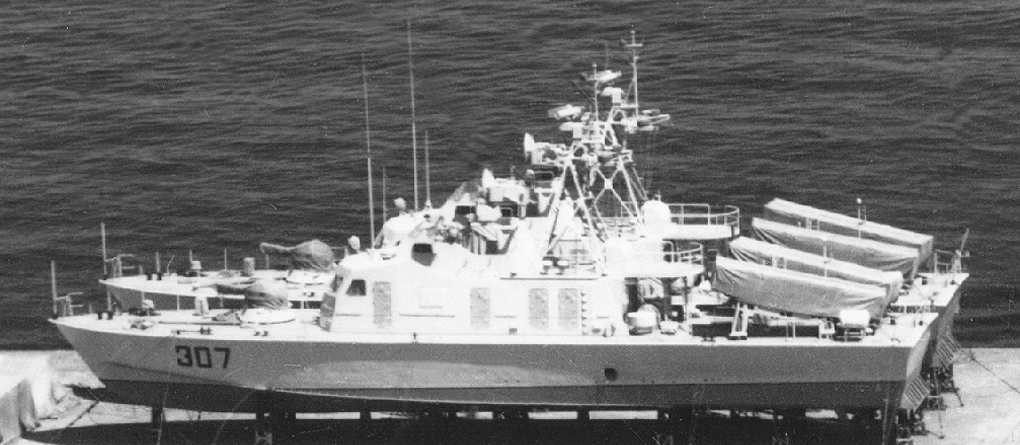
U.S. Navy from Combat Fleets of the World 16th Edition
Displacement: 118 tons (135 fl)
Speed: 37 kts (34 kts sust.)
Dimensions: 34.10 × 6.70 × 1.8 meters (1.295 mean hull)
Armaments: 4 C-802 SSM; 1 twin 30-mm 65-cal. Model 69 AA; 1 twin 23-mm 87-cal. ZSU-23-2 AA
Electronics: Radar: 2 Type RM 1070A nav.; 1 Type 341 (Rice Lamp) gun f.c.
Machinery: 2 MTU 16V396 TB94 diesels; 2 props; 6,220 bhp
Range: 500/24; 1,050/18
Endurance: 5 days
Electric: 65 kw
Crew: 2 officers, 14 enlisted
Remarks: Referred to locally as the Tondor class and were originally numbered 301 through 310. Reportedly were ordered in 1991 or 1992. First five delivered 9-94; second five, with added EW gear, were delivered in 3-96. P 313-3 was noted in 10-97 with a twin 23-mm mount installed abaft the lattice mast, and the others have been similarly equipped.
Más sobre Missile Patrol Craft
19: Iranian Patrol Craft/Boats
3 U.S. PGM 71 class
Builder: Peterson Builders, Inc., Sturgeon Bay, Wis. (Entered Service: 1967–70)
211 Parvin (ex-PGM 103)
213 Nahid (ex-PGM 122)
212 Bahram (ex-PGM 112)
Displacement: 102 tons light (142 fl)
Speed: 17 kts
Dimensions: 30.81 × 6.45 × 2.3 meters
Armament: 1 40-mm 60-cal. Mk 3 AA; 1 20-mm 90-cal. Oerlikon GAM-B01 AA; 2 single 12.7-mm Colt M2 mg?
Electronics: Radar: 1 . . . nav.
Machinery: 8 General Motors 6-71 diesels; 2 props; 2,120 bhp?
Electric: 30 kw tot.
Range: 1,000/17
Fuel: 16 tons
Crew: 30 tot.
Remarks: Thought to have been sunk during the Iran-Iraq War but have been sighted still in service. ASW equipment originally fitted (SQS-17 hull-mounted sonar, Mouse- trap ASW rocket launchers, and depth charges) has been removed, and the original radar may have been replaced.
15 Peykaap (IPS 16) class
Builder: North Korea (Entered Service: 2002)
Displacement: 14 tons
Speed: 52 kts
Dimensions: 16.3 × 3.75 × 0.9 meters
Armaments: 2 324-mm TT; 1 12.7-mm mg
Electronics: Unknown
Machinery: 2 diesels; 2 surface-piercing props; 2,400 bhp?
Range: 320/52
Crew: 3
Remarks: Constructed in North Korea; built with signature reduction hull features. The first six units were delivered 8-12-02.
20+ modified Peykaap (IPS 16a) class
Builder: North Korea (Entered Service: 2006)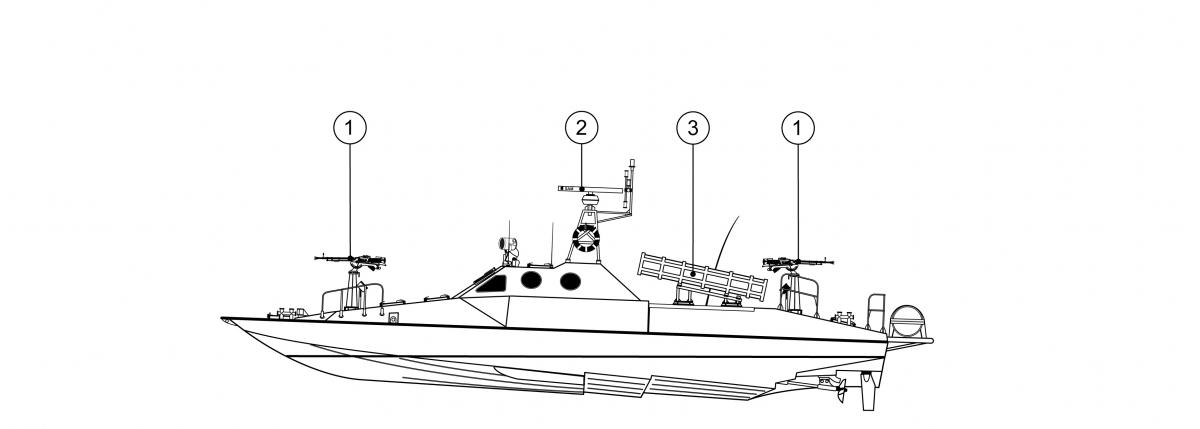
Modified Peykaap (IPS 16a) class 1. 12.7-mm machine gun; 2. Navigational/ surface search radar; 3. Launcher for C-704/Nasr-1 SSM Drawing by Ivan Zajac for Combat Fleets of the World 16th Edition
Displacement: 14 tons
Speed: 52 kts
Dimensions: 16.3 × 3.75 × 0.9 meters
Armament: 2 C-704 Nasr-1 SSM; 2 12.7-mm mg or 2 torpedoes
Electronics: Unknown
Machinery: 2 diesels; 2 surface-piercing props; 2,400 bhp
Range: 320/52
Crew: 3
Remarks: Constructed in Iran to a North Korean design; modified variants of the Peykaap (IPS 16) class. All units can carry 2 Chinese C-704 missiles (built domesti- cally as the Iranian ìNasr-1î) and are fitted with either two 12.7-mm machine guns or two torpedoes. Also known as the Peykaap II-class.
6 MIG-S-2600-PB class
Builder: Joolaee Iran Marine Industries
Displacement: 80 tons (85 fl)
Speed: 35 kts
Dimensions: 26.20 × 6.20 × 1.40 (hull) meters
Armament: 1 12-round 107-mm artillery RL; 1 twin 14.5-mm 79-cal. AA?
Machinery: 4 MWM TBD-234-V16 diesels; 4 props; 4,000 bhp
Crew: 10 tot.
Remarks: Also known as the Zafar class. Offered for export sale, and at least one proto- type was built for Pasdaran Revolutionary Guard service. Design appears to be based on the North Korean Chaho class (of which three were transferred 4-87 and since discarded).
10 MIG-G-1900 class
Builder: Iran Marine Industries (Entered Service: 1992– 93)
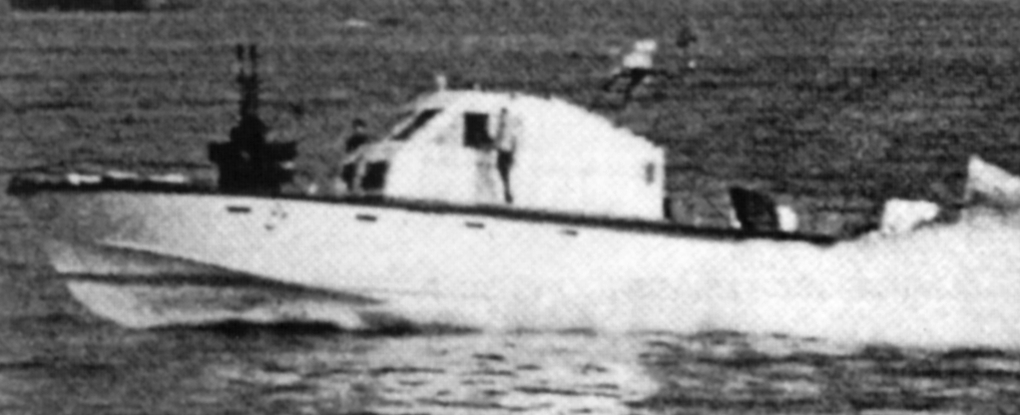
U.S. Navy
Displacement: 28 tons (30 fl)
Speed: 36 kts
Dimensions: 19.45 × 4.20 × 0.90 meters
Armaments: 1 twin 23-mm 87-cal. ZSU-23-2 AA
Electronics: Radar: 1 . . . nav.
Machinery: 2 MWM TBD 234-V12 diesels; 2 props; 1,646 bhp
Crew: 8 tot.
Remarks: Hullform based closely on the U.S. Mk III patrol boat but built with German- supplied diesel engines and with the pilothouse on the centerline.
20 MIG-G-1800-TRB class
Builder: Iran Marine Industries
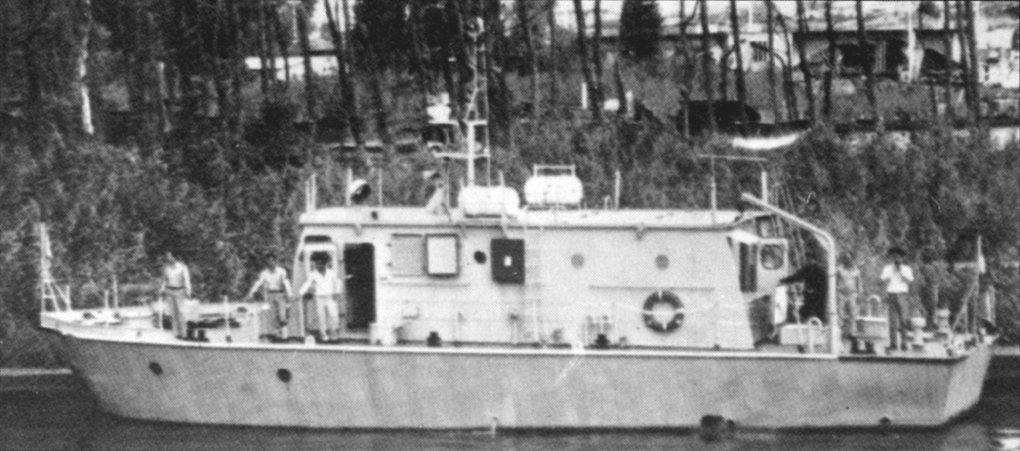
U.S. Navy
Displacement: 54 tons (60 fl)
Speed: 18 kts
Dimensions: 18.67 × 5.76 × 1.05 meters
Armament: 1 twin 23-mm 87-cal. ZSU-23-2 AA
Electronics: Radar: 1 . . . nav.
Machinery: 2 MWM TBD 234-V12 diesels; 2 props; 1,646 bhp
Crew: 8 tot.
Remarks: Intended primarily for customs service and police duties; operated by the Pasdaran. Has a large deckhouse extending over nearly the entire length of the hull and appears unsuitable for open-water operations.
Más sobre Iranian Patrol Craft/Boats
20: Iranian Patrol Boats II
3 Kajami-class semi-submersible attack craft
Builder: North Korea (Entered Service: 2002)
Displacement: 30 tons
Speed: 50 kts
Dimensions: 21 x Unknown x Unknown
Armament: 2 234-mm TT; 2 12.7-mm mg
Machinery: Unknown diesels
Crew: 4 (+ 4 passengers)
Remarks: Built in North Korea; fitted with a snorkel and are most likely intended to operate semi submerged for only brief periods to collect intelligence or arrive undetected within torpedo firing range of its target.
3 Gahjae-class semi-submersible attack craft
Builder: North Korea (Entered Service: 2002)
Displacement: 7 tons
Speed: 50 kts
Dimensions: 12.8 x 2.95 x .06 meters
Armament: 2 234-mm TT
Machinery: Unknown diesels
Crew: 4 (+ 4 passengers)
Remarks: Significantly smaller than the Kajami class; may be based on the Peykaap class. Built in North Korea; fitted with a snorkel and are most likely intended to operate semi-submerged for only brief periods to collect intelligence or arrive undetected within torpedo firing range of its target.
15 Tarlan class catamarans
Builder: Iran (Entered service: 2005-2007)
Displacement: 8.5 tons
Speed: 50 kts
Dimensions: 11.9 × 3.1 × 0.65 meters
Machinery: 2 . . . diesels; 2 surface-piercing props; 1,320 bhp
Crew: 3
Electronics: Unknown
Range: Unknown
Remarks: Aluminum construction catamaran hull. Armament fit unknown.
10 TIR (IPS-18) class
Builder: North Korea (Entered service: 2005-2007)
Displacement: 30 tons
Speed: 52 kts
Dimensions: 21.1 × 5.8 × 0.9 meters
Machinery: 3 unknown diesels; 3 props; 3,600 bhp
Crew: 3
Electronics: Unknown
Range: Unknown
Remarks: Constructed in North Korea for service with the Pasdaran Revolutionary Guard Corps; built with signature-reduction hull features; deliveries began during 2002, all were reportedly in service by 2006.
20 MIG-G-0900-cPB class
Builder: Iran Marine Industries
Displacement: 5 tons (fl)
Speed: 30 kts
Dimensions: 9.20 × 2.82 × 0.40 meters
Armaments: 112-round 107-mm artillery RL; 1 12.7-mm mg
Machinery: 2 Volvo-Penta . . . diesels; 2 water jets; 1,260 bhp
Crew: 3 tot.
MIG-G-0790-PB class
Builder: Iran Marine Industries
Displacement: 2.55 tons (fl)
Speed: 40 kts
Dimensions: 7.95 × 2.41 × 0.55 meters
Armaments: Small arms
Machinery: 2 gasoline outboards; 400 bhp
Crew: 2 tot.
MIG-G-0700-PB class
Builder: Iran Marine Industries
Displacement: 1.7 tons (fl)
Speed: 35 kts
Dimensions: 7.00 × 2.50 × 0.35 meters
Armaments: Small arms
Machinery: 1 gasoline outboard; 150 bhp
crew: 2 tot.
Remarks: Open launch with forward area decked over.
MIG-G-0500-Pl class
Builder: Iran Marine Industries
Displacement: 1.1 tons
Speed: 40 kts
Dimensions: 5.00 × 2.15 × 0.30
Armaments: Small arms
Machinery: 1 gasoline outboard; 115 bhp
Crew: 2 tot.
Remarks: GRP construction, open hull.
Note: Other indigenous classes include the smaller MIG-G-0600-CN3, MIG-G-0610- GP, MIG-G-0500-PL (a 5-m Boston Whaler copy), MIG-G-0800-GP1 (an 8-m Whaler copy), MIG-G-0800-GP2 (same design with a cabin and powered by two outboards), and MIG-G-1200-PS (a personnel launch with a cabin over nearly the entire length). An unknown number of 75-knot Bladerunner 10-m and 15-m craft are in service, some armed with one12-round 107-mm artillery RL and a 12.7-mm mg.
Up to 32 “Boghammar Boat” special forces craft
Builder: Boghammar Marin, Stockholm, Sweden (In serv. 1986)
Displacement: 6.4 tons (fl)
Speed: 45 kts
Dimensions: 12.80 × 2.66 × 0.90 meters
Armament: 2 single 12.7-mm mg or 23-mm 87-cal. ZU-23-2 AA; 1 106-mm recoilless rifle and/ or RPG-7 antitank RL or 12-round 107-mm RL?
Electronics: Radar: 1 Decca 170 nav. or none?
Machinery: 2 Volvo Penta TAMD-71A diesels; 2 props; 716 bhp?
Range: 500/38 nautical miles
Crew: 5-6 tot.
Remarks: Known locally as the Toragh class. Ordered 1984, ostensibly for customs service duties; 37 had been delivered by 7-87 for use by Revolutionary Guards in attacks on undefended merchant ships, and ultimately as many as 51 may have been received. U.S. forces destroyed five during 1987-88, of which one was salvaged and taken to the U.S. for use as a training target. Three Iranian units were returned to Sweden in 1992 for refit. Two versions delivered: Model RL-118 and Model RL-130-4A.
Hull systems: Have aluminum-construction, stepped-hydroplane hullform. Were re- portedly being re-engined with Seatek diesels in 1991.
Combat systems: A variety of armaments have been observed, with weapons fitted from whatever was available and according to missions foreseen.
20 or more GRP launches
Builder: Unknown
Displacement: 1.3 tons (fl)
Speed: 40 kts
Dimensions: 6.7 × 2.3 × 0.4 (prop) meters
Armaments: 1 12.7-mm mg and/or 1 12-round 107-mm RL
Machinery: 2 gasoline outboard motors; 240 shp?
Remarks: Some imported, some built locally in Iran. Used for harassing attacks on unarmed merchant vessels during Iran-Iraq War.
Note: Also in use by the Revolutionary Guards are 7.5-m Damen, Gorinchem-built assault boats, a few wooden dhows of around 23 m overall for mine laying, European- manufactured semi-rigid inflatable craft, and Iranian-built copies of the British Watercraft 800ñseries open workboat, the latter capable of 40 kt speeds.
9 U.S. Mk III class
Builder: Marinette Marine, Marinette, Wis. (Entered Service: 1975–76)
Displacement: 28 tons (36.7 fl)
Speed: 24 kts
Dimensions: 19.78 × 5.50 × 1.80 (props) meters
Armaments: 1 20-mm 90-cal. Oerlikon GAM-B01 AA; 1 twin and 2 single 12.7-mm mg
electronics: Radar: 1 LN-66 nav.?
Machinery: 3 G.M. 8V71 TI diesels; 3 props; 1,800 bhp
Range: 450/26; 2,000/ . . .
Endurance: 3 days
Crew: 9 tot.
Remarks: Survivors of 20 originally delivered; remainder lost in Iran-Iraq War or worn out and scrapped. Aluminum construction, with pilothouse offset to starboard side. A 20-mm Oerlikon AA mounting has replaced the 12.7-mm machinegun formerly carried forward. Based at Bushehr and Bandar Abbas.
6 or more U.S. 50-foot class
Builder: Peterson Bldrs., Sturgeon Bay, Wis. (Entered service: 1975–78)
Displacement: 20.1 tons (22.9 fl)
Speed: 28 kts
Dimensions: 15.24 × 4.80 × 1.9 meters
Armaments: 2 single 12.7-mm mg
Electronics: Radar: 1 Raytheon SPS-66 nav.
Machinery: 2 G.M. Detroit Diesel 8V71 TI diesels; 3 props; 850 bhp (460 sust.)
Range: 750/26
Crew: 6 tot.
Remarks: Sixty-one were ordered in 1976. Nineteen were delivered complete from the U.S., and the others were shipped as kits for assembly in Iran by Arvandan Maritime Corp., Abadan, where they were still being assembled into the 1980s. Placed under na- val control in 1990. Many were lost during the Iran-Iraq War, and a number of the kits were apparently never completed. The survivors are said to operate in the Caspian Sea. Aluminum construction. Some have been equipped with British Tiger Cat surface-to-air missiles to be employed in a surface-to-surface mode.
Information from the upcoming Combat Fleets of the World 16th Edition.
Más sobre Iranian Patrol Boats II
22: Avenger-class MCM
Avenger class MCM |
| U.S. Navy Builder: Peterson Shipbuilders, Sturgeon Bay, Wis.; Marinette Marine, Marinette, WI. |
| Date Deployed: Sept. 12, 1987 (USS Avenger) |
| Propulsion: Four diesels (600 horsepower each), two shafts with controllable pitch propellers. |
| Length: 224 feet (68.28 meters). |
| Beam: 39 feet (11.89 meters). |
| Displacement: 1,312 tons (1,333.06 metric tons) full load. |
| Speed: 14 knots (16.1 mph, 25.76 kmph). |
| Crew: 8 officers, 76 enlisted. |
| Armament: Mine neutralization system. Two .50 caliber machine guns. |
Más sobre Avenger-class MCM
23: Sea Dragon

U.S. Navy
Contractor: Sikorsky Aircraft Division of United Technologies Corp.
Date Deployed: First flight: Dec 23, 1981; Operational: June 1986.
Propulsion: Three General Electric T64-GE-419 turboshaft engines (4,750 shaft horsepower each).
Length: Fuselage: 73 feet, 4 inches (22 meters); Overall: 99 feet 0.5 inches (30.2 meters).
Height: 28 feet 4 inches (8.6 meters).
Rotor Diameter: 79 feet (24.1 meters).
Weight: Max. Gross weight, w/ external load: 69,750 lbs (31,693 kg)
Max. Gross weight, w/internal load: 69,750 lb (31,693 kg)
Empty weight: 36,745 lb (16,667 kg)
Airspeed: Max: 150 knots (278 km/hour).
Ceiling: 10,000 feet.
Range: Max: 1050 nautical miles.
Crew: Two pilots, one aircrewman.
Load: 55 troops or 32,000 pounds (14,512 kg) cargo.
Más sobre Sea Dragon
24: USS Enterprise
USS Enterprise

U.S. Navy
Más sobre USS Enterprise
25: USS Abraham Lincoln
Location not exact
USS Abraham Lincoln
 |
| Builder: Newport News Shipbuilding Co., Newport News, Va. |
| Date Deployed: May 3, 1975 (USS Nimitz). |
| Unit Cost: About $4.5 billion each. |
| Propulsion: Two nuclear reactors, four shafts. |
| Length: 1,092 feet (332.85 meters). |
| Beam: 134 feet (40.84 meters); Flight Deck Width: 252 feet (76.8 meters). |
| Displacement: Approximately 97,000 tons (87,996.9 metric tons) full load. |
| Speed: 30+ knots (34.5+ miles per hour). |
| Crew: Ship's Company: 3,000-3,200, air wing: 1,500, other: 500. |
| Armament: Multiple NATO Sea Sparrow, Phalanx CIWS, and Rolling Airframe Missile (RAM) mounts. |
| Aircraft: Approximately 60+. |
Más sobre USS Abraham Lincoln
26: Al Ba?rah Oil Terminal
Más sobre Al Ba?rah Oil Terminal
27: Khor al-Amaya Oil Terminal
Más sobre Khor al-Amaya Oil Terminal